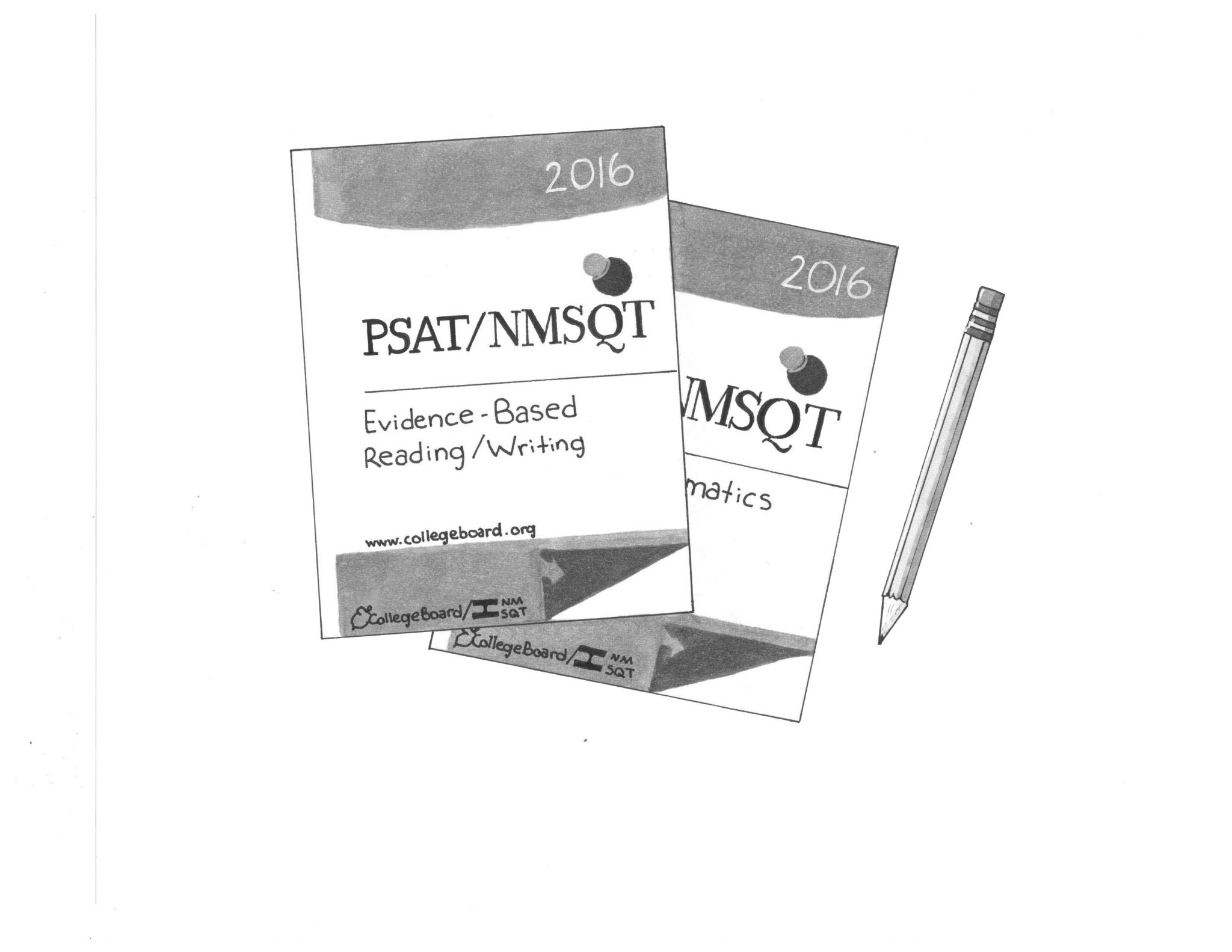
“On Oct. 14, the Practice Scholastic Aptitude Test (PSAT) will be administered to sophomores and juniors. The test format of this administration of the PSAT reflects the changes of the Scholastic Aptitude Test (SAT) that will be effective next March. This change demands some major adjustments for students like junior Kendison Ma who have already prepared for the current version of the test. “Well, that’s the reason why I’m taking [the current SAT] in November,” says Ma. “I don’t want to take the new SAT.”
The new changes for the SAT include dividing the scoring into two 800 point sections — math and English — rather than the previous scoring system that consisted of three 800 point sections: math, reading, and writing. However, the PSAT will be scored out of 1520 points, with two 760 point sections.
Instead of math being a third of the overall score, it will now account for half. The essay section is now optional and the College Board is removing the guessing penalty on the multiple choice section. Aragon junior Benjamin Goya comments, “It’ll be more similar to the ACT, as the ACT comprises of an optional essay and no guessing penalty.”
For current sophomores and juniors, the different format for the SAT will be introduced through the upcoming PSAT. College and career advisor Laurie Tezak says, “Students who take the redesigned PSAT in October, which is aligned with the new SAT, will have access to Khan Academy, which will be absolutely free.” Khan Academy is a non-profit educational organization, helping students with a wide range of academic topics.
Tezak continues, “It’s a really big change … it aligns more with the Common Core [than before].” For example, some questions on the math portion of the SAT will no longer allow the use of calculators, as they will focus more on deconstructing the various components of word problems. The College Board’s website also claims the new SAT will feature more colloquial vocabulary, meaning the tricky vocab words will likely be removed, leading the tests to include more words actually used in school and the workforce.
With the PSAT as a preliminary test, Juniors who score in the top percentile can qualify for the National Merit Scholarship, an academic competition for scholarships, provided by the nonprofit National Merit Scholarship Corporation. Aragon senior and National Merit semifinalist Tony Wang prepared heavily for the PSAT his sophomore year. Wang says, “I took this course down in Santa Clara. The course focused on the reading and writing sections of the test … we just did a lot of practice problems and the instructor also went over techniques. Practice did it for me.”
For 2014’s PSAT, Aragon had the most National Merit Scholarship semifinalists in its history, with 13 students, followed by San Mateo High with three, and Mills and Hillsdale with two each. However, Wang does not believe that the new format of the PSAT will significantly decrease the number of eligible students, commenting, “I don’t think it will affect [the number of NMSC semifinalists] because the PSAT/SAT is designed pretty well in that it’s able to distinguish people who do well academically.”
With the free tools provided by the College Board, students will have plenty of resources to prepare themselves for the tests. Ready or not, these changes are coming, so get ready.”
